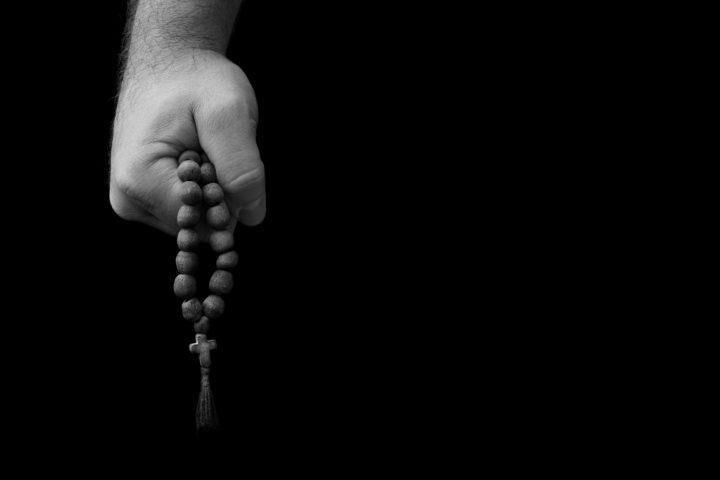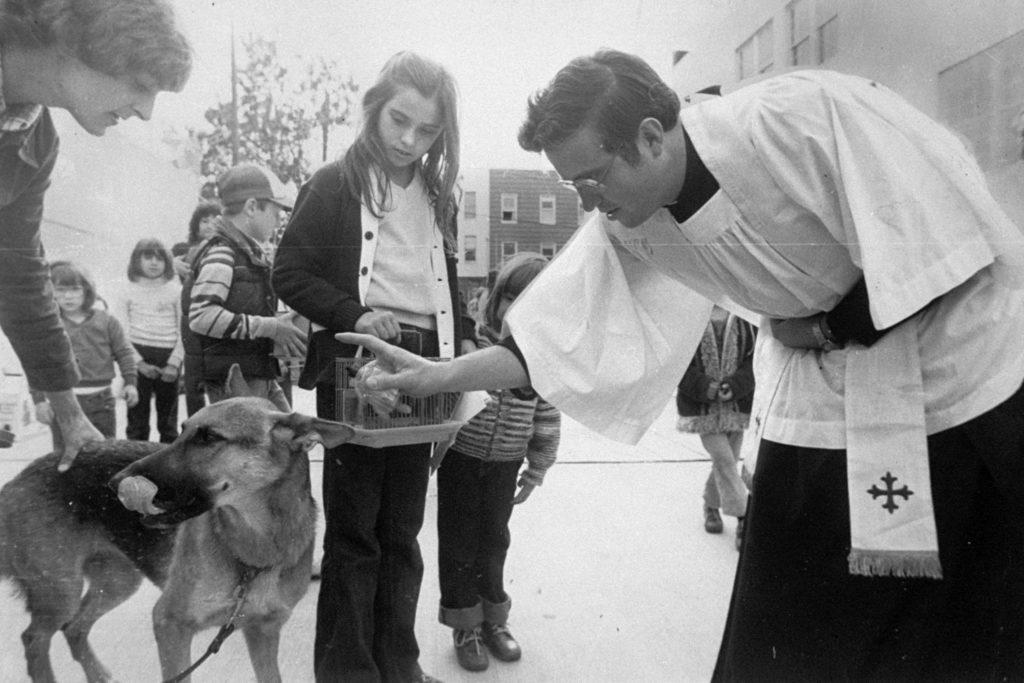|
Report says 48 priests accused of child sex abuse worked in Queens, but diocese questions its accuracy
By Robert Pozarycki
Four dozen priests who worked at Queens churches over the last half-century were accused of child sex abuse, according to a report released by a legal group representing victims. The Diocese of Brooklyn and Queens, however, charged that the report isn’t completely accurate. Lawyers Helping Survivors of Child Sex Abuse issued “Hidden Disgrace,” a 22-page summary which lists the names of 65 clergy members in the Diocese of Brooklyn and Queens who have been accused of sexually abusing children; in some cases, the abuse occurred more than 50 years ago. An examination of the report found that 48 of the priests had been assigned to Queens churches, schools and institutions. The report came out a week before the Dec. 21 deadline for child sex abuse survivors to enroll in the Independent Reconciliation and Compensation Program (IRCP). The Diocese of Brooklyn launched the voluntary settlement program in June to provide restitution to those who had been abused by a priest or deacon but who could not seek legal remedies because of an expired statute of limitations. Survivors can come forward on their own or with legal representation to file a claim. On its website, Lawyers Helping Survivors of Child Sex Abuse describes itself as a coalition of “the nearly 500-member powerhouse firm of Weitz & Luxenberg P.C.” along with “national sex abuse firms James, Vernon & Weeks, P.A. and Noaker Law Firm LLC.” The legal team calls itself “a forceful and cohesive team of attorneys to fight for sexual abuse victims.” The website also has pages for IRCPs in the Diocese of Brooklyn, the Diocese of Rockville Centre and the Archdiocese of New York, and other pages for child sex abuse cases involving the Boy Scouts and Jehovah’s Witnesses. “Hidden Disgrace” also named eight priests who, up until Dec. 14, had not been previously accused in public of abusing children. Four of these clergymen previously worked in Queens. The diocese, however, questioned the report’s legitimacy, and the motives of the legal team responsible for its publication. In a lengthy statement on Thursday, the diocese charged that the report included the names of priests “who were falsely accused and subsequently cleared of any wrongdoing,” and other clergymen who either hail from other countries or belong to a specific order, but are not under the diocese’s jurisdiction. “When names of priests and former priests, who were credibly accused, become public because of [the compensation] program, it is more evidence that the program is working as the diocese intended,” Carolyn Erstad, a diocese spokesperson, said in the statement. “However, it appears today as though lawyers, looking for new clients, have hastily and irresponsibly published some names of innocent men.” Multiple accused priests in seven parishes Lawyers Helping Survivors of Child Sex Abuse pointed out that the priests named in the report were either identified by survivors who came forward or named in previously published news articles about sexual abuse allegations. According to the report, seven Queens parishes had three accused clergymen assigned there over the years: Corpus Christi in Woodside; Our Lady Queen of Martyrs in Forest Hills; St. Anastasia in Douglaston; St. Camillus in Rockaway Park; St. Gabriel in East Elmhurst; St. Pancras in Glendale; and St. Patrick in Long Island City. No single church had more than three priests on the list. Three accused priests had also spent time at Cathedral Preparatory Seminary in Elmhurst, where young men aspiring to become priests receive their high school education. The report noted that many of the allegations “emerged long after the statue of limitations on the crimes expired, and therefore have not been heard in a court of law.” Currently, in New York state, survivors of child sex abuse cannot seek legal action against their abusers after reaching 23 years of age. Many sexually abusive priests, the report points out, remain unnamed. “For far too long, there has been little known about priests accused of abuse, and this silence has had devastating consequences,” according to Jerry Kristal, an attorney with Weitz & Luxenberg. “This report aims to shine a light on the credibly accused predators in Brooklyn and Queens, and to let survivors know that their abusers will not be hidden any longer.” For years, advocates of child sex abuse victims have pushed for passage of the Child Victims Act, which would allow any survivor 28 years of age and under to seek justice against those who abused them. Originally sponsored by former Assemblywoman Margaret Markey of Maspeth, the bill’s key sponsor is Assemblyman Mike Miller of Woodhaven, who took up the fight following Markey’s defeat in 2016. The state legislature did not pass the Child Victims Act this year, drawing the attention and ire of advocates and, among others, late-night talk show host Samantha Bee. Priests prosecuted or placed on leave Some of the named priests were prosecuted for crimes against children. Father Joseph Byrns, who was at St. Anastasia between 1969 and 1983, pleaded guilty to child endangerment in January of 2006 and wound up serving three years’ probation. He was charged in August of 2004 with abusing a boy four years earlier; he had also been accused of abusing two brothers while at St. Anastasia between the late 1960s and early 1970s. Father Enrique Diaz Jimenez served at St. Leo’s Church in Corona between 1984 and 1986; he was arrested in 1990 and later pleaded guilty to abusing three boys at the parish. Later on, he was found to have abused 18 boys in Venezuela and two others in Colombia. Jimenez served four months in prison and five years’ probation for his Queens crimes, but is now incarcerated in Colombia. Other accused priests were placed on leave by the diocese years ago. Father James P. Collins was removed from assignment in 2002 after an investigation determined that he had abused boys while assigned to St. Michael’s Church in Brooklyn, Our Lady Queen of Martyrs in Forest Hills and St. Margaret Church in Middle Village between 1981 and 1985. Father George F. Zatarga allegedly abused at least five boys while serving as a chaplain at Bishop Loughlin Memorial High School in Brooklyn and at Archbishop Molloy High School in Briarwood during the 1970s. He had been assigned to American Martyrs Church in Bayside when he was placed on leave in 2007. One priest, Father Adam Prochaski, allegedly abused more than 20 female students — some as young as 5 years of age — while assigned to Holy Cross Church and School in Maspeth between 1972 and 1994. Many of the children were Polish immigrants who arrived in the U.S. and came to Prochaski for assistance. Earlier this year, more than a dozen women made public their accusations against Prochaski, who left the priesthood 23 years ago. Credibility of new charges questioned The Diocese of Brooklyn, however, cautioned that the charges against the eight newly identified priests named in the lawyers’ group report surfaced just weeks ago, and that “the credibility of the allegations made against them has not yet been determined.” They slammed the lawyers group as acting unethically in publicizing their names before the charges are proven valid. “When money is made available through a compensation program like the IRCP, there is always the risk of fraudulent allegations brought by people looking to make money,” Erstad said. “Therefore, allegations made after the start of the compensation program against priests in good standing must be investigated.” Last month, the Diocese of Brooklyn issued its own list of priests who were laicized by the Vatican because they had sexually abused minors. Laicized priests, Erstad explained, are stripped of all duties and rights as a member of the clergy; they cannot celebrate Mass publicly, wear vestments or maintain a reverend title, or serve in any other public manner on the church’s behalf. Ten of the 13 laicized priests were included in the Dec. 14 report. The diocese also called into question the motives of Lawyers Helping Survivors of Child Sex Abuse, which “have already represented a number of survivors taking part in the various local IRCPs and, we believe, have profited substantially from doing so.” They even went as far as to suggest the group might be misleading clients by offering services through a .org webpage typically used by nonprofit organizations. “Since the program was established, these attorneys and many others have launched widespread advertisement campaigns to attain survivors as clients,” Erstad said. “Many of them were never known as advocates of sexual abuse victims until our compensation program was established and financial settlements became readily available.” The diocese noted that IRCP participants do not need their own counsel to apply, but can receive free legal representation to help them understand the settlement agreement before they decide whether to sign it. ‘A typical knee-jerk response’ Asked for a response to the diocese’s charges, Kristal told QNS in a phone interview that it represented a “typical knee-jerk response” from a large organization facing additional legal liabilities. “There is no fraud. People need to know that there is a deadline” for the IRCP, he said. “We’re encouraging people to come forward and take advantage of the program.” As to the accusation that some priests on the list were falsely accused, Kristal acknowledged that those names were errantly included — and would have them removed once the legal team verifies the information with the diocese. “We have no interest in accusing someone falsely,” he added. “We’re not trying to hurt anyone’s reputation.” Contact: rpozarycki@qns.com
|
.
Any original material on these pages is copyright © BishopAccountability.org 2004. Reproduce freely with attribution.

